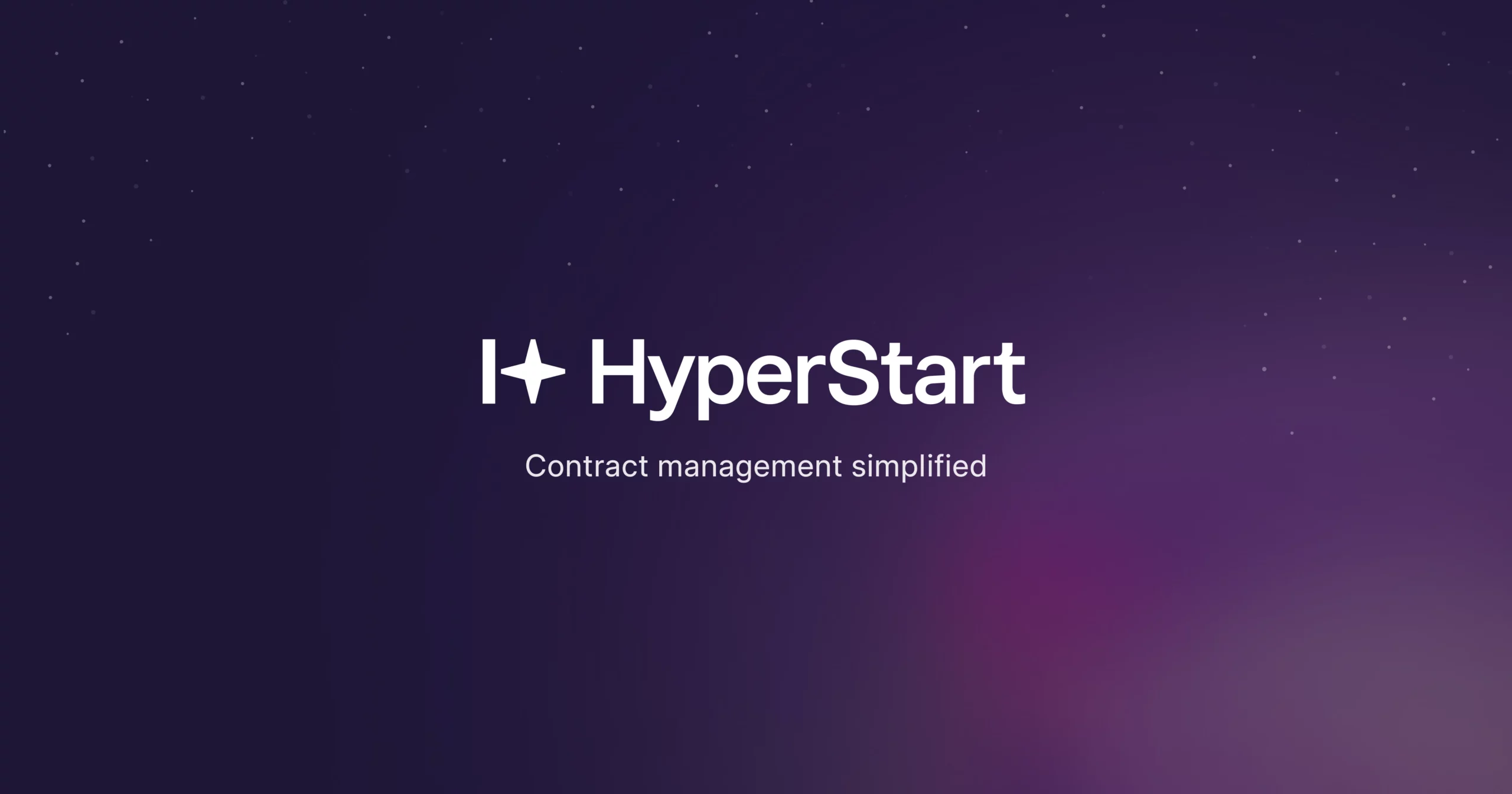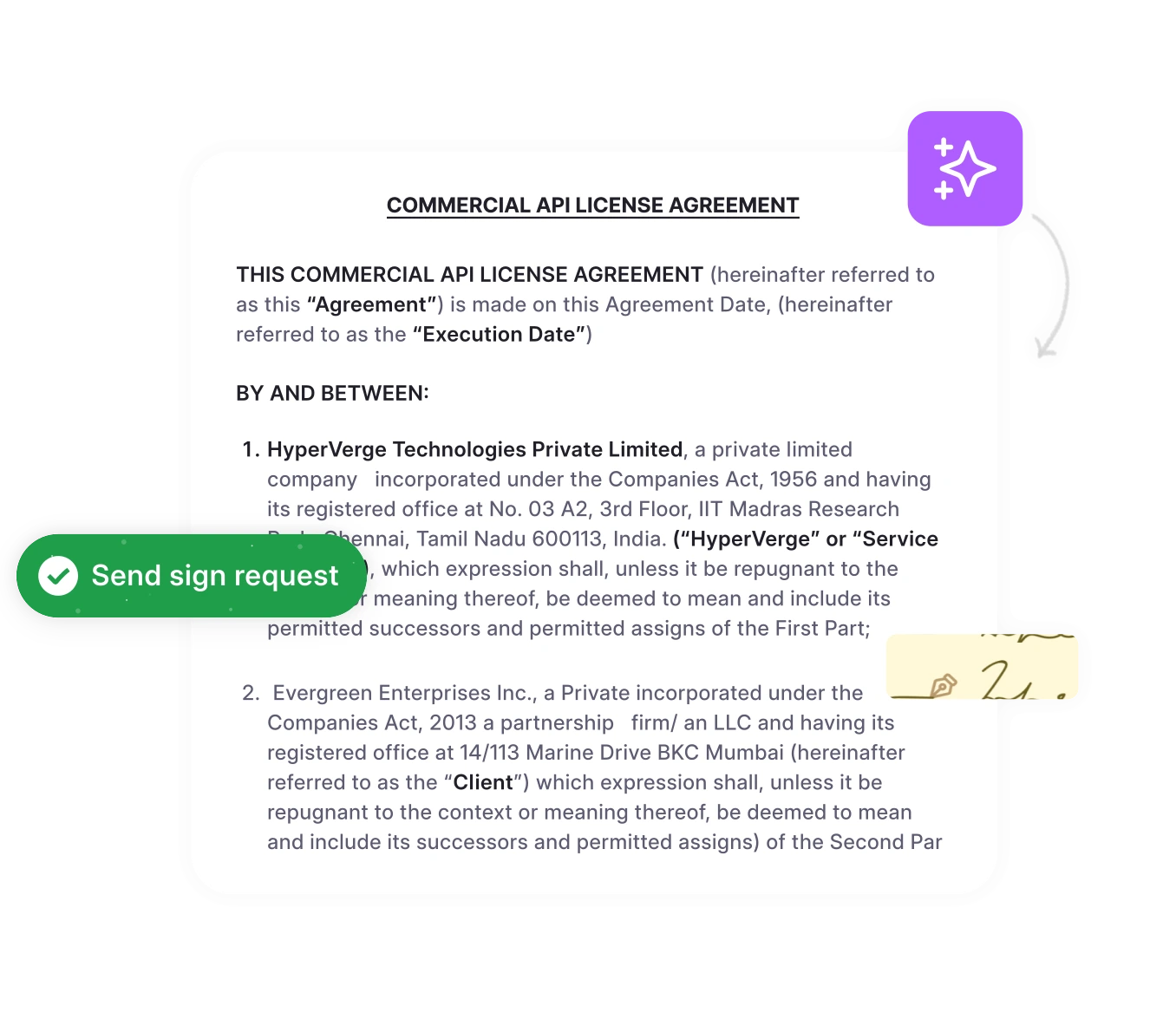Healthcare provider contracts are where legal complexity meets operational reality. Unlike standard commercial agreements, these contracts must navigate a dense web of regulations—Stark Law, HIPAA, state insurance mandates, and ever-evolving CMS rules—all while aligning with care delivery models and reimbursement strategies.
For legal teams, the pressure is intense. A single misstep can trigger serious consequences: lost network access, delayed or denied reimbursements, and costly compliance violations. And the data backs it up:
- The average hospital negotiates contracts with 33 different payers, often juggling 52 separate agreements.
- 77% of providers worry about payment denials.
Why is provider contracting so uniquely challenging? Because even one vague clause or missed credentialing detail disrupts workflows, delays payments, or even reduces the quality of patient care.
The landscape continues to shift. With value-based care, telehealth expansion, and tighter data regulations, contracts need more than legal review. They require precise, proactive management, ideally driven by a structured contract lifecycle management process.
In this guide, we’ll unpack:
- What makes provider agreements different from other contracts
- The most common regulatory and operational pitfalls
- How legal teams can build smarter contracts that protect compliance and drive better outcomes
Let’s get started.
What is a provider contract in healthcare?
A provider contract in healthcare is a legal agreement between a healthcare provider (such as a physician, medical group, or hospital) and a health insurance company (payer) that defines the terms under which medical services are delivered and reimbursed.
These contracts determine:
- The scope of services a provider can offer
- Reimbursement rates and payment models
- Credentialing and enrollment requirements
- Claims submission timelines and payment schedules
- Regulatory compliance expectations
Before signing, providers must complete credentialing—a verification process for education, licensing, certifications, and insurance coverage. Once approved, you receive an assigned provider number for all future billing and reporting. This process plays a crucial role in the early stages of the contract lifecycle management process as it sets the foundation for a legally sound agreement.
Being in-network with major insurers is critical for patient access, reduced claim denials, and growth opportunities. Poor contract management, missed renewals, and unfavorable clauses leads to revenue leakage and compliance risks.
Automate renewal tracking
HyperStart CLM ensures you never miss a renewal deadline again.
Book a DemoHow provider contracts impact your revenue cycle and compliance
Provider contracting directly influences every phase of a healthcare organization’s revenue cycle, from patient access and claim submission to reimbursement rates and regulatory compliance. A single clause in a contract can determine whether your organization thrives or bleeds revenue.
1. In-network status drives patient volume
For most patients, “Is this provider in my network?” is the first filter when choosing a healthcare provider. Being in network with major health insurance plans not only boosts trust but also increases access to patients who might otherwise avoid out-of-pocket expenses.
This matters deeply for provider growth. Healthcare organizations that fail to secure or maintain in-network status with key payers, including government programs like Medicare, often see dramatic drops in patient traffic. If you manage multiple payer relationships, explore how HyperStart’s payer contract management solution streamlines credentialing, renewals, and negotiation workflows. Even the best clinicians may struggle to grow their practice if network access is blocked due to outdated contracts or missed credentialing steps.
2. Reimbursement terms shape cash flow
Contract payment models vary significantly:
- Fee-for-service: Set amount per service
- Capitation: Monthly per-member rate regardless of visits
- Bundled payments: One payment for related services
- Value-based care: Compensation tied to outcomes
If contracts don’t align with your care costs or clinical model, they can devastate cash flow. That’s why understanding different types of contracts—like capitation vs fee-for-service—is critical when choosing the right reimbursement structure.
For example, capitation contracts serving high-needs patients with chronic conditions might operate at a loss unless rates reflect the additional resources required.
3. Denied claims and underpayments often tie back to contract gaps
Ever had a claim denied and thought, “But we followed the process”? Often, the issue isn’t the care, it’s the contract. Outdated terms or vague definitions of reimbursable services can all cause claims to be rejected or underpaid.
Contracts that don’t specify what services are covered, how to submit claims, or acceptable coding formats can lead to billing rework, delays, or denials, making strong contract compliance protocols essential for revenue cycle stability. And when that happens, your team is forced into back-and-forths with insurers, burning hours on disputes instead of scaling care delivery.
4. Credentialing and compliance clauses can impact network status
Most payers require periodic credentialing reviews, which verify that physicians, nurses, and other providers maintain up-to-date licensing, education, malpractice coverage, and background checks. This is not a “set it and forget it” task.
If a contract includes rigid compliance language and your credentialing files are outdated, the payer can immediately flag the provider as out of network, even if care is actively being delivered. In worst-case scenarios, providers may unknowingly deliver medical services that later become non-billable, hurting both revenue and patient trust.
5. Missed renewals and revenue leakage from poor contract management
Many contracts include auto-renewal clauses or expiration dates buried deep in appendices. Without visibility, you risk missing key contract renewal opportunities that could increase reimbursement rates or reflect changing care models.
- Reimbursement rates and payment models—don’t just accept their first offer
- Contract length and renewal schedules that work for your planning cycle
- Amendment rights and credentialing responsibilities
- Performance metrics and any value-based care requirements
- How disputes get handled and audit policies
This is where modern contract management software becomes mission-critical. Without proactive reminders, structured renewal workflows, and visibility across departments, healthcare providers risk losing leverage during contract negotiations or worse, losing network access altogether.
Are you leaving money on the table?
See how HyperStart CLM eliminates revenue leakage and keeps you compliant with automated contract management.
Book a DemoKey components of a provider contract
Let’s break down the most important components that show how they directly impact a provider’s operations, reimbursement, and compliance.
| Section | What it covers |
| Scope of Services | Defines the medical treatments, procedures, and diagnostic services the provider is authorized to deliver under the contract. Clarifies what’s reimbursable. |
| Reimbursement Terms | Specifies how the provider will be paid — fee-for-service, capitation (per-member-per-month), bundled payments, or value-based models tied to quality outcomes. |
| Payment Timelines | Outlines when claims must be submitted and how quickly the payer is obligated to reimburse. Delays here can disrupt cash flow and billing operations. |
| Credentialing Requirements | Details the qualifications, licenses, and certifications providers must maintain to stay in-network. Losing credentials can void the contract. |
| Quality Measures | Describes performance benchmarks the provider must meet (e.g., patient outcomes, readmission rates). Often tied to financial bonuses or penalties. |
| Termination Clauses | Sets the duration of the agreement, notice periods, conditions for early termination, and whether the contract auto-renews. Clarity here prevents abrupt exits. |
| Dispute Resolution | Explains how disagreements over payments, coverage, or performance are resolved — through arbitration, mediation, or litigation. |
| Amendment Policies | Defines whether one party (usually the payer) can change contract terms unilaterally, or if both sides must agree. Impacts provider rights and negotiation power. |
| Data Security & Compliance | Ensures the provider complies with HIPAA, Stark Law, and the Anti-Kickback Statute. Also addresses obligations for patient data privacy and regulatory audits. |
How to overcome common provider contract challenges with better negotiation
Here are the most common challenges in provider contracting, along with practical solutions you can negotiate for upfront.
1. Administrative burden and credentialing slowdowns
The volume of documents required for provider enrollment, from board certifications and licensing to liability coverage, can overwhelm even the most organized teams. These delays not only slow down contract signing but can also postpone a provider’s start date and access to in-network status.
What you can do: Negotiate credentialing SLAs with payers. Request written timelines for when the assigned number will be issued and when a provider is officially activated. Internally, use tools like HyperStart to automate reminders for credentialing renewals and securely store required documents.
2. Poor contract visibility across departments
How many times has your billing team discovered they’ve been using outdated reimbursement rates because the latest contract amendment got lost in transit? Or did compliance miss a key deadline because they were working off an old version? When everyone’s maintaining their contract files separately, things slip through the cracks.
What you can do: Create a central place where everyone can access the same current contracts. During negotiations, ensure both sides have clear points of contact and centralized visibility into the current version, avoiding “I’ll have someone get back to you” runarounds.
3. Repeated claim denials due to unclear billing terms
Many denied claims stem from contracts that lack clarity around CPT codes, modifiers, or file submission formats. These errors don’t reflect poor care. They reflect poor documentation alignment.
What you can do: Request a billing and submission addendum in the contract. Include an implementation grace period (60–90 days) to correct billing issues without penalty. Make sure formatting and coding responsibilities are documented clearly and reviewed by both the billing and compliance teams.
4. Missed renewal dates and outdated reimbursement schedules
Auto-renewal sounds convenient until you realize you’ve been stuck with below-market rates for two years because nobody remembered to review the contract. These dates have a way of sneaking up on busy teams, and by then, your negotiating power has already expired.
What you can do: Include a mandatory rate review clause in your contract, reviewed annually or biannually. Use automated tools to flag upcoming expiration dates and renewal deadlines. Assign roles within your team to track these milestones and initiate timely contract negotiations.
5. One-sided amendment provisions
Some payers love contracts that let them change the rules whenever they want coverage limits, payment terms, even which services they’ll cover, while you’re stuck with whatever they decide. By the time you notice these changes buried in routine emails, you’re already dealing with the fallout.
What you can do: Fight for equal say in contract changes. If that’s a non-starter, at least secure enough notice time (60 days minimum) and the right to walk away if new terms don’t work for you. Don’t let essential changes get lost in routine correspondence.
6. Credentialing lapses that lead to network termination
Here’s a scenario that keeps practice administrators up at night: you miss a credentialing renewal deadline and suddenly find yourself out of network. Worse, you might not even know until months later when you’re wondering why claims aren’t getting paid.
What you can do: Make payers commit to giving you heads-up notices before credentialing expires. Build your tracking system, whether it’s a simple calendar or sophisticated software, to stay on top of these dates. Try to negotiate continued billing privileges during renewal processing so you’re not left hanging.
7. Ambiguous or payer-biased dispute resolution terms
Without a clear dispute resolution process, disagreements over reimbursement, audits, or compliance can become drawn-out legal issues. Worse, many payer contracts default to venues or arbitration rules that favor the insurer.
What you can do: Get the dispute process in writing upfront. Push for neutral arbitration in your state rather than wherever the payer prefers. Make sure you know exactly what types of issues can be disputed and what the escalation process looks like before lawyers get involved.
The provider contracting process (Step-by-Step)
Here’s a closer look at what a typical provider contracting journey looks like and how healthcare contract management best practices can help.
Step 1: Requesting a provider contract from a payer
It all starts with making the ask. Whether you’re growing your practice, opening a new location, or welcoming a new physician to your team, you’ll need to reach out to the health insurance company to request a participation agreement.
Most payers have their provider enrollment process, and honestly, they’re all a bit different. Some have slick online portals that make things relatively painless, while others still want you to fill out paper forms or send lengthy emails. Either way, you’ll need to gather some basic information:
- Your contact details and tax ID
- What specialties do you offer, and your licensing information
- Which clinics or hospital departments are you affiliated with
- A comprehensive list of the medical services you provide
Once they receive your request, the payer will do some initial screening before sending you a draft contract.
Step 2: Completing credentialing before contract approval
Here’s where things get interesting. Before you can sign anything, the payer needs to verify you’re legitimate through their credentialing process. Think of it as their due diligence to make sure you meet regulatory standards and their internal requirements.
They’ll dig into everything:
- Your medical degrees, education, and board certifications
- Current licensing and DEA registration
- Professional liability insurance coverage
- Your work history, hospital privileges, and any sanctions or disciplinary actions
This process can drag on for weeks, especially if you’re dealing with manual submissions or missing paperwork. But once you’re approved, you’ll get an assigned provider number—essentially your unique identifier that ties all future claims, audits, and payments back to you.
Step 3: Reviewing the draft provider agreement
Now comes the critical part—reading the contract they send you. Make sure it aligns with the core elements of a contract, like scope, consideration, and compliance.
Pay close attention to these key areas:
- Make sure the full scope of services are covered
- Do reimbursement rates cover your costs?
- Claims submission timelines and how quickly you’ll get paid
- Termination clauses, dispute resolution procedures, and compliance expectations
- Whether the payer can unilaterally change terms down the road
This isn’t a one-person job. Get your legal team and billing folks involved early—they’ll catch things you might miss and help you understand the financial implications.
Step 4: Negotiating provider contract terms
Here’s something many providers don’t realize: these contracts aren’t set in stone. Most payers are willing to negotiate, especially on certain terms. You just have to ask.
Common negotiation points include:
- Reimbursement rates and payment models—don’t just accept their first offer
- Contract length and renewal schedules that work for your planning cycle
- Amendment rights and credentialing responsibilities
- Performance metrics and any value-based care requirements
- How disputes get handled and audit policies
Good negotiations now can save you headaches later. It’s worth investing time upfront to avoid surprises once you’re in-network and seeing patients.
Step 5: Signing the provider contract and finalizing onboarding
Once you’ve hammered out terms that work for both sides, it’s time to make it official. The final contract gets signed—either digitally or with actual ink, depending on what the payer prefers.
But signing is just the beginning. Your operations team needs to get busy preparing your internal systems:
- Configure your EHR for the new payer
- Update insurance panel information
- Make sure your front desk can schedule patients under the new plan
- Get listed in the payer’s provider directory
- Set up claims submission processes (EDI enrollments, clearinghouse connections, and all that technical stuff)
Once everything’s connected and working, you’re officially “active” and can start seeing patients under the new agreement. The real test begins when you submit your first few claims and see how smoothly everything runs if your contract repository is structured right, you’ll have everything you need in one place.
How does HyperStart CLM transform provider contracting?
All these features make provider contracting easier, faster, and more reliable, so your team can avoid delays, stay compliant, and focus on delivering better contracting solutions.
| Feature | HyperStart CLM Solution | Key Benefits |
| Contract Storage | Centralized, secure, searchable repository with version control | Find any contract in seconds; single source of truth |
| Deadline Management | Automated alerts for renewals, credentialing deadlines, and notice periods | |
| Contract Drafting | Pre-approved template library | Save hours per contract, ensure consistency, and reduce legal review time |
| Compliance | Built-in HIPAA, ISO, and state-specific compliance checks | Proactive risk identification, automated compliance tracking, and audit readiness |
| Access Control | Role-based access with complete audit logs and secure sharing | Meet healthcare security standards, full accountability, and controlled external sharing |
| Performance Tracking | Real-time dashboards showing reimbursement trends, bottlenecks, and expiring terms | Data-driven negotiations; identify revenue opportunities; spot issues before they impact operations |
| Renewal Management | Mandatory review triggers, renewal workflows, and negotiation preparation tools | Better negotiated rates, proactive contract management, and strategic renewal planning |
| Team Collaboration | Centralized platform with department-specific views and automated notifications | Improved cross-team coordination, consistent information, streamlined workflows |
See how HyperStart CLM can save your team hours every week and recapture missed contract opportunities. Book a demo now.











